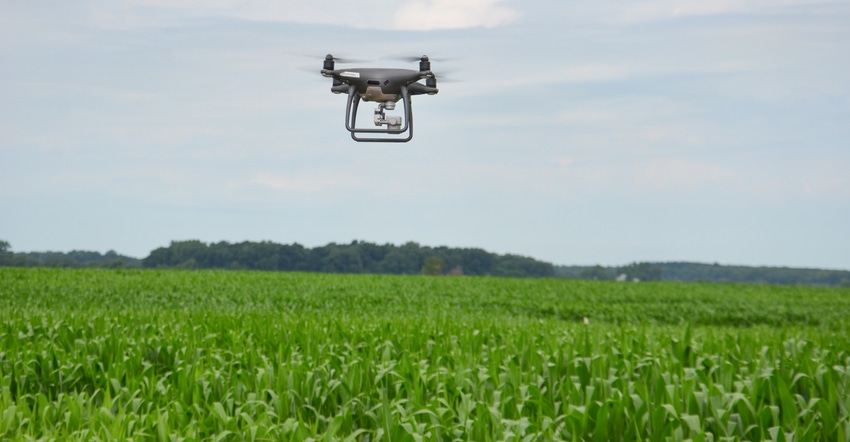
Various individuals have experimented with spraying and seeding with UAVs. But when Rantizo received approval as the first company in Iowa to be legally authorized for application of agrichemicals using unmanned aerial vehicles earlier this year, it opened a new door.
“Our drone technology had been ready for a few months; we just needed the regulatory landscape to get sorted out,” says Michael Ott, Rantizo CEO. “Building the technology is the easy part.”
Where could drones fit in the treatment of crop disease or seeding of cover crops? Ott offers an example. He notes that fungicide applications in corn are most effective if made within 72 hours of infection. By the time a farmer finds infection and can get an aerial applicator scheduled, the window may be over.
Reaching more fields in less time will be an advantage once drone spraying technology is common, Ott believes. For more information, visit rantizo.com.
Analyze data
Meanwhile, Adama USA, a global crop protection company, unveiled a new service to make better use of data collected through UAV flights. Adama Eagle Eye powered by Agremo offers advanced analysis of aerial data and imagery that can help you protect yields more efficiently. It produces user-friendly maps, statistics and other practical tools for interpreting aerial images. Learn more at adamaeagleeye.com.
Upgraded drone software
Many people flying drones over crop fields use DroneDeploy to turn pictures into one stitched image. DroneDeploy announced a major expansion across its product line in July, introducing a single platform for all drone operations. Spokespeople say the new platform launch includes automated drone fleet management, enhanced workflow integrations, a low-altitude inspection mode and advanced analytic capabilities. The low-altitude inspection mode works with manual flights.
One new feature, Earthworks, uses 3D analytics to allow users to know how much dirt they moved during construction projects in hours rather than in days. DroneDeploy is a subscription service. Visit dronedeploy.com.
Workflow solutions
Known for such innovations as Slingshot and Viper 4+ software, Raven Industries Inc. introduces Connected Workflow, geared to helping ag retailers seamlessly and wirelessly connect their office to the field. It’s just another step along the road toward efficient fleet management and coordination, experts say. Idle, work and transport times will be easier to manage with this system, spokespeople say. Learn more at ravenprecision.com.
New insecticide
Corteva Agriscience received EPA registration for Transform WG insecticide. It contains what the company calls “Isoclast active” chemistry. Eight new crops, including corn and alfalfa, were added to the label by EPA, and previously labeled uses for soybeans and cotton were restored. Thanks to a distinct mode of action, Transform WG selectively controls sap-feeding insects without disrupting beneficial insects that prey on aphids and other pests. Visit corteva.us.
Nematicide approved
Vive Crop Protection received EPA approval for Averland FC, which controls a wide spectrum of nematodes in corn. Company spokespeople say it will allow corn growers to use abamectin mixed with liquid fertilizer for the first time. The product is also now registered for control of Colorado potato beetle and other insects in potatoes. For more details, see vivecrop.com.
Biologicals advance
FMC continues pursuing biological microbial pesticides. The company recently submitted documentation to EPA for two new active ingredient microbial pesticide strains. The unique combination of two bacilli strains will help suppress diseases in soybeans such as sudden death syndrome, fusarium, rhizoctonia and phytophthora. FMC expects approval in late 2020.
About the Author(s)
You May Also Like




